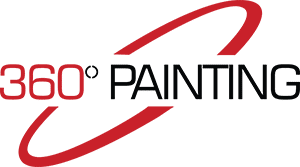A Beginner’s Guide to White Washing
Whitewashing is a classic technique that has been used for centuries to add a fresh, bright look to walls, furniture, and other surfaces. While initially used on exterior walls to protect them from the sun, whitewashing has evolved into a popular interior design trend, giving homes a rustic and charming atmosphere. If you’re based in Seminole County, Florida, and are considering giving your home a facelift with whitewashing, you’ve come to the right place.
Whitewashing is a great way to add character and visual interest to your home while still maintaining its original texture and charm. It’s a versatile method that can be used on various surfaces, including brick, wood, and even concrete. Whether you’re looking to update your interior walls, furniture, or outdoor spaces, whitewashing can provide a timeless and elegant finish.
In this comprehensive guide, we’ll take you through the basics of whitewashing and provide you with the knowledge and tools you need to get started on your own whitewashing project. From knowing the materials required to mastering the techniques, you’ll gain the confidence to transform your home with this beautiful and captivating finish.
Whitewashing: What You Need to Know
Before diving into the whitewashing process, it’s essential to understand the basics of this technique. Whitewashing involves applying a thin, watered-down layer of paint or lime wash to a surface, allowing the texture and imperfections of the material to show through. This creates a subtle, weathered look that adds depth and character to the surface.
Traditionally, whitewashing was done using a mixture of lime and water, but modern whitewashing often involves using water-based paints and other additives to achieve the desired effect. The goal of whitewashing is to create a semi-transparent layer that subtly changes the appearance of the surface while still allowing its natural beauty to shine through.
Choosing the Right Materials
When embarking on a whitewashing project, it’s crucial to select the right materials for the job. Depending on the surface you plan to whitewash and the look you want to achieve, you’ll need to gather the following materials:
1. Paint or Lime Wash: Choose a high-quality, water-based paint or lime wash in the color of your choice. Consider the texture and absorbency of the surface when selecting the paint to ensure the desired result.
2. Brushes or Rollers: Select brushes or rollers suitable for the size and texture of the surface. For rougher textures, a brush with natural bristles may be more effective, while smooth surfaces can be easily covered with a roller.
3. Protective Gear: Ensure you have appropriate protective gear, such as gloves and safety goggles, to safeguard yourself while working with paint and other materials.
4. Cleaning Supplies: Prepare the surface by cleaning and prepping it before whitewashing. This may include sanding, patching, and priming, depending on the condition of the surface.
Mastering the Whitewashing Techniques
Once you have gathered your materials, it’s time to master the whitewashing techniques. The following steps provide a basic outline of the whitewashing process:
1. Prepare the Surface: Clean the surface thoroughly and make any necessary repairs before beginning the whitewashing process. This may involve sanding rough patches or filling in cracks and holes.
2. Dilute the Paint: If using water-based paint, dilute it with water to achieve the desired consistency. The amount of water required will depend on the opacity you wish to achieve.
3. Apply the Whitewash: Using a brush or roller, apply the diluted paint in thin, even layers. Work in small sections, allowing each layer to dry before applying the next. For a more transparent finish, use a higher dilution of paint.
4. Customize the Look: Experiment with different techniques to achieve your desired look. You can vary the number of layers, the dilution of the paint, and the application method to create a unique effect.
5. Seal the Surface (Optional): Depending on the surface and the durability required, you may choose to seal the whitewashed area with a clear sealant to protect the finish and make it easier to clean.
Embracing the Timeless Charm of Whitewashing
Whitewashing offers a timeless charm that can bring a sense of history and elegance to any home. Whether you’re aiming for a rustic, farmhouse-inspired look or a coastal, beach-house feel, whitewashing allows you to achieve a range of aesthetic styles. By embracing the natural imperfections and textures of the surface, whitewashing can create a warm and inviting atmosphere in any space.
As a homeowner in Seminole County, Florida, you can draw inspiration from the region’s laid-back coastal vibes and natural surroundings to incorporate whitewashing into your home decor. Whether you’re renovating an old beach cottage or modernizing a city apartment, the versatility of whitewashing makes it a perfect choice for capturing the relaxed yet sophisticated ambiance of coastal living.
With its ability to evoke a sense of nostalgia and nostalgia while remaining relevant in contemporary design, whitewashing is a classic technique that will stand the test of time. By mastering the art of whitewashing, you can infuse your home with a sense of history and character, creating a space that feels both welcoming and stylish.
Final notions
Whitewashing is a versatile and charming technique that can breathe new life into your home decor. By knowing the basics of whitewashing, choosing the right materials, and mastering the techniques, you can transform your space with a timeless and elegant finish. Embrace the natural textures and imperfections of the surfaces in your home to create a warm and inviting atmosphere that captures the timeless charm of whitewashing.


